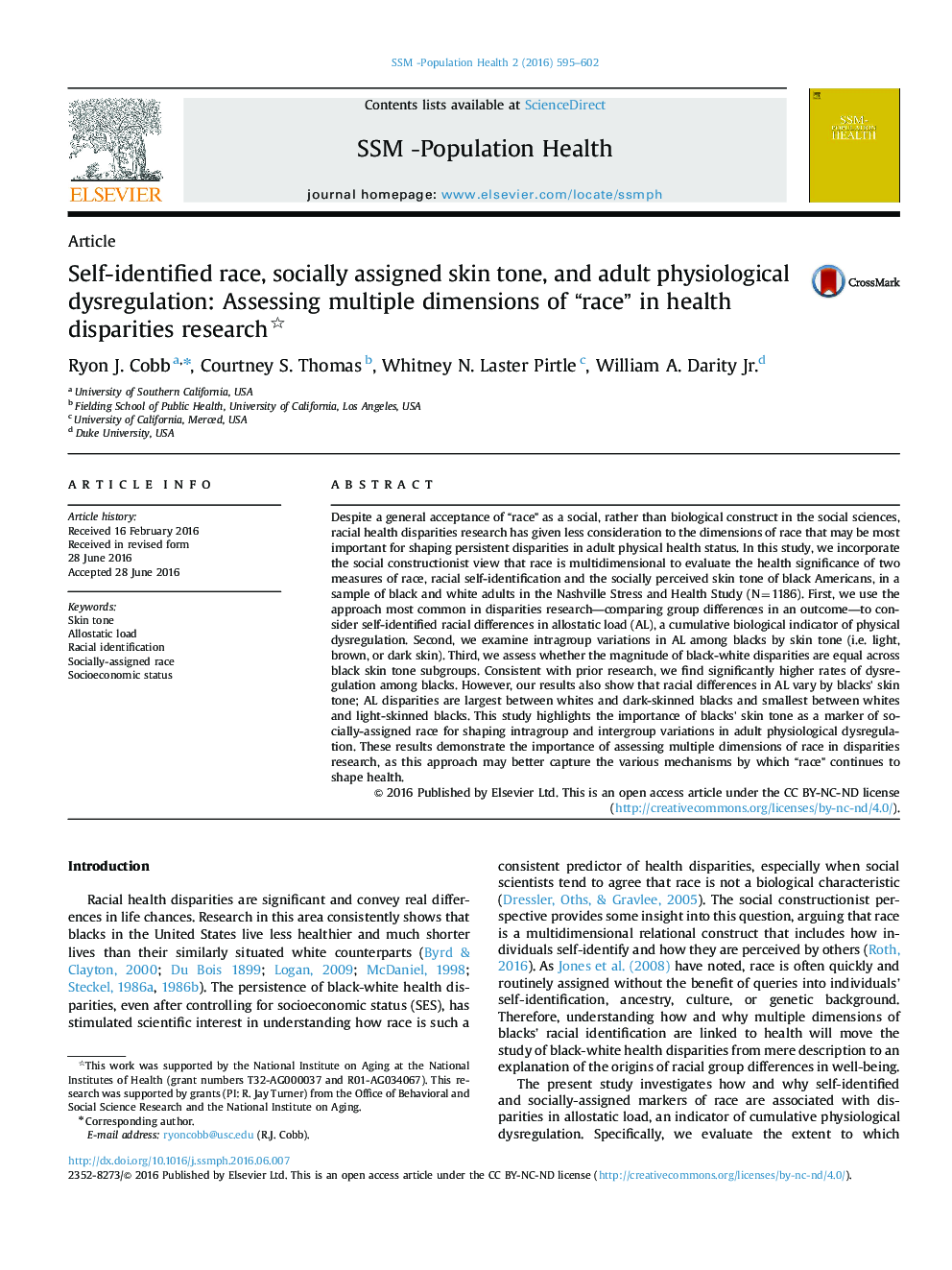| Article ID | Journal | Published Year | Pages | File Type |
|---|---|---|---|---|
| 1092368 | SSM - Population Health | 2016 | 8 Pages |
•Blacks have higher allostatic load (i.e. physiological dysregulation) than whites.•Skin tone is a source of intragroup variation in allostatic load among blacks.•Black-white differences in allostatic load vary by blacks’ perceived skin tone.•Allostatic load disparity is smallest between whites and light-skinned blacks.•Results show importance of self-identified and socially assigned race measures.
Despite a general acceptance of “race” as a social, rather than biological construct in the social sciences, racial health disparities research has given less consideration to the dimensions of race that may be most important for shaping persistent disparities in adult physical health status. In this study, we incorporate the social constructionist view that race is multidimensional to evaluate the health significance of two measures of race, racial self-identification and the socially perceived skin tone of black Americans, in a sample of black and white adults in the Nashville Stress and Health Study (N=1186). First, we use the approach most common in disparities research—comparing group differences in an outcome—to consider self-identified racial differences in allostatic load (AL), a cumulative biological indicator of physical dysregulation. Second, we examine intragroup variations in AL among blacks by skin tone (i.e. light, brown, or dark skin). Third, we assess whether the magnitude of black-white disparities are equal across black skin tone subgroups. Consistent with prior research, we find significantly higher rates of dysregulation among blacks. However, our results also show that racial differences in AL vary by blacks’ skin tone; AL disparities are largest between whites and dark-skinned blacks and smallest between whites and light-skinned blacks. This study highlights the importance of blacks’ skin tone as a marker of socially-assigned race for shaping intragroup and intergroup variations in adult physiological dysregulation. These results demonstrate the importance of assessing multiple dimensions of race in disparities research, as this approach may better capture the various mechanisms by which “race” continues to shape health.
